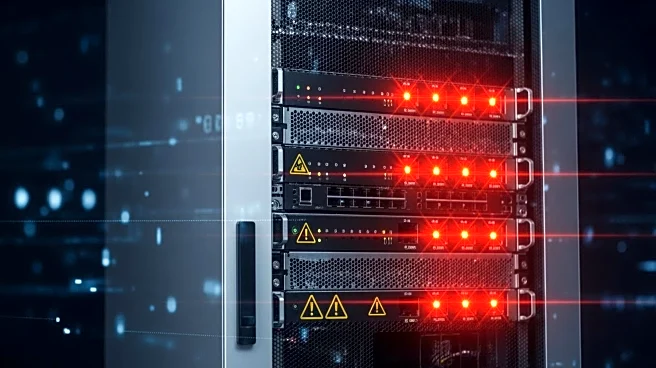What's Happening?
Fuji Electric has recently addressed several vulnerabilities in its V-SFT software, which is used for configuring human-machine interfaces (HMIs) in industrial settings. These vulnerabilities, discovered by cybersecurity researcher Michael Heinzl, could
potentially allow threat actors to gain unauthorized access to industrial systems. The flaws include issues that could lead to information disclosure and arbitrary code execution, posing significant risks to organizations using the software. An attacker could exploit these vulnerabilities by using social engineering tactics to trick users into opening malicious project files, thereby gaining control over the system. Fuji Electric has released patches to mitigate these risks, although the process took approximately four months from notification to resolution.
Why It's Important?
The vulnerabilities in Fuji Electric's V-SFT software highlight the critical importance of cybersecurity in industrial environments. As these systems are integral to manufacturing and other industrial operations, any breach could lead to significant disruptions, financial losses, and potential safety hazards. The timely patching of these vulnerabilities is crucial to protect sensitive industrial processes from cyber threats. Organizations using Fuji Electric's HMIs must ensure they apply the latest patches to safeguard their systems. This incident underscores the ongoing challenges faced by industrial sectors in maintaining robust cybersecurity defenses against increasingly sophisticated attacks.
What's Next?
Organizations utilizing Fuji Electric's V-SFT software are advised to implement the latest patches promptly to secure their systems against potential exploitation. Cybersecurity teams should remain vigilant and continue to monitor for any signs of compromise. Additionally, the incident may prompt other industrial software providers to review their security protocols and expedite patching processes to prevent similar vulnerabilities. As cybersecurity threats evolve, industrial organizations must prioritize regular updates and employee training to mitigate risks associated with social engineering attacks.
Beyond the Headlines
The discovery and patching of these vulnerabilities also raise broader questions about the security of industrial control systems and the need for improved collaboration between cybersecurity researchers and manufacturers. The delay in patching these vulnerabilities suggests potential gaps in communication and response strategies that could be addressed to enhance overall cybersecurity resilience. Furthermore, the incident may influence regulatory bodies to consider stricter guidelines for cybersecurity practices in industrial sectors.













